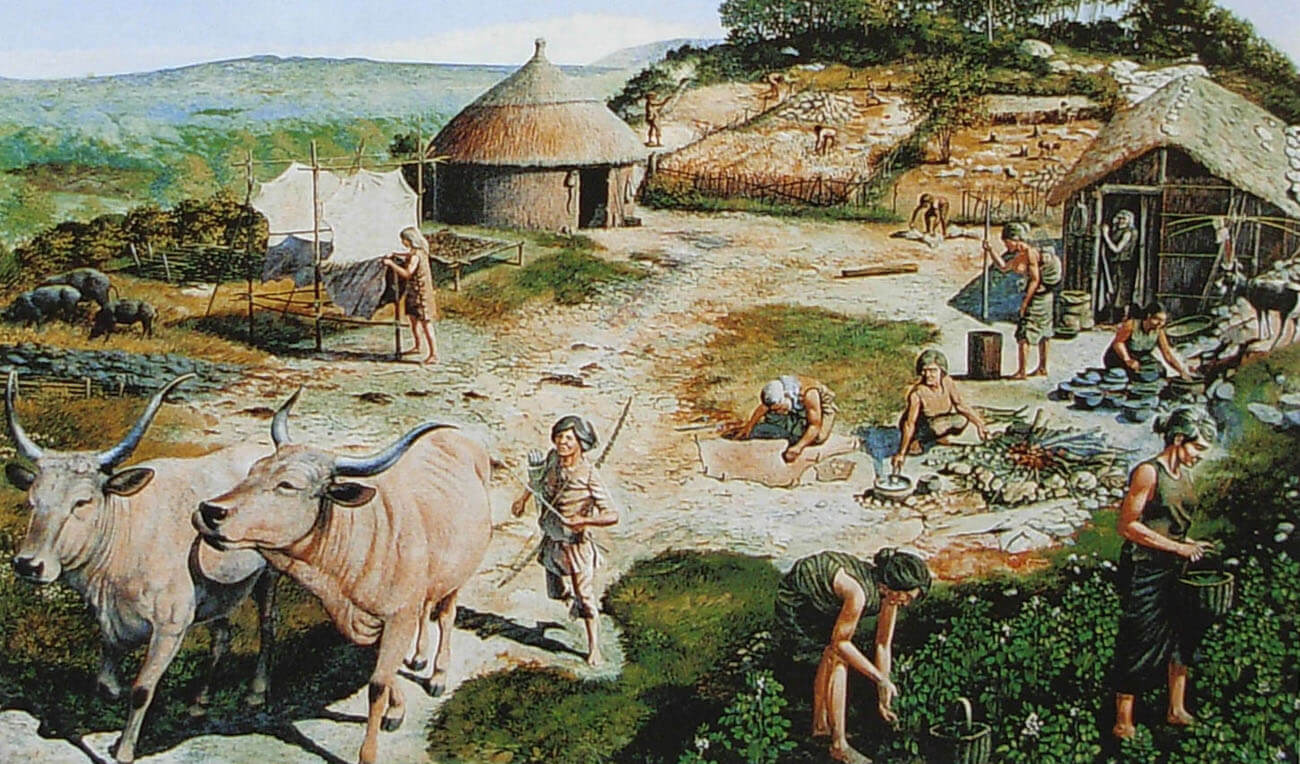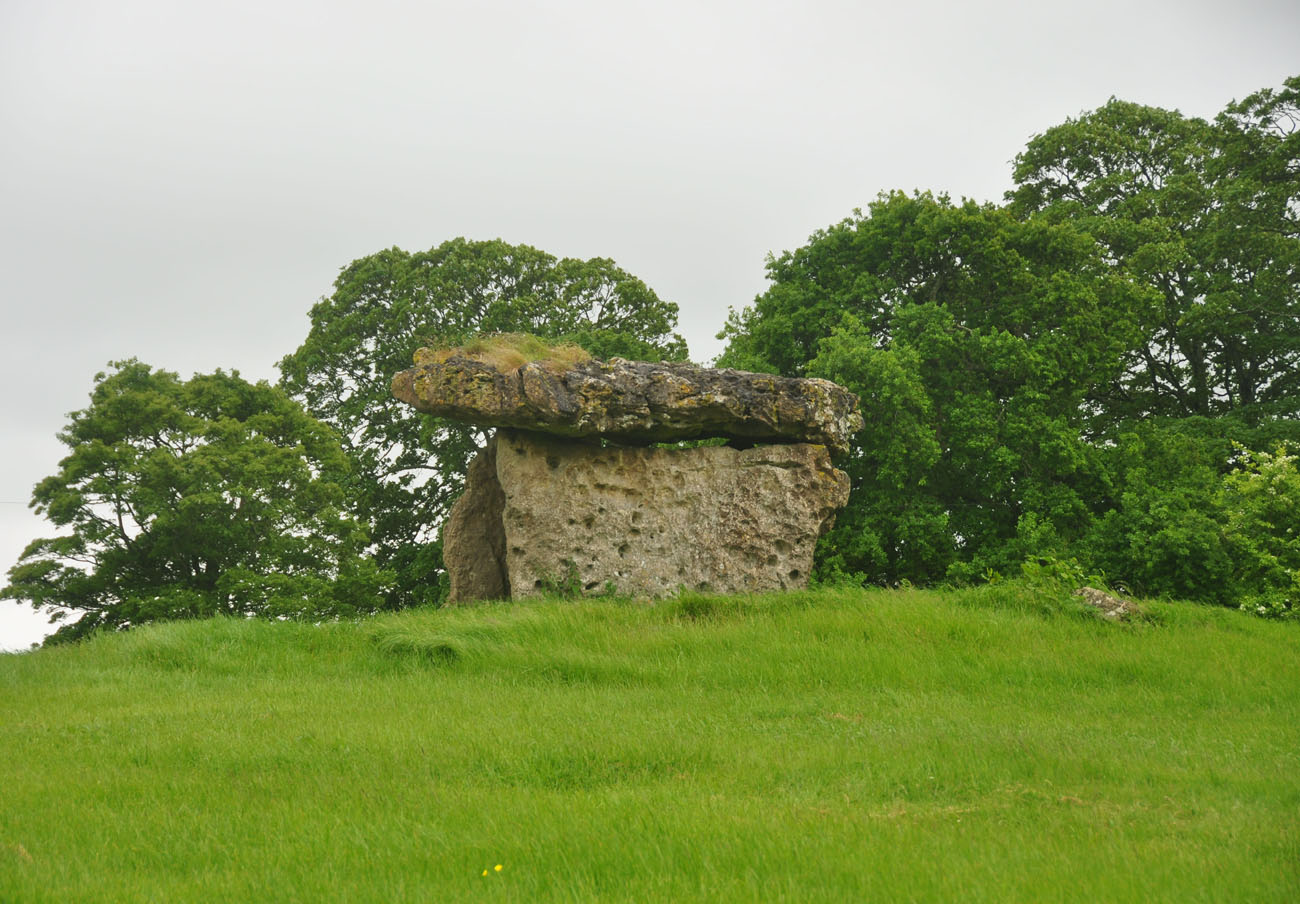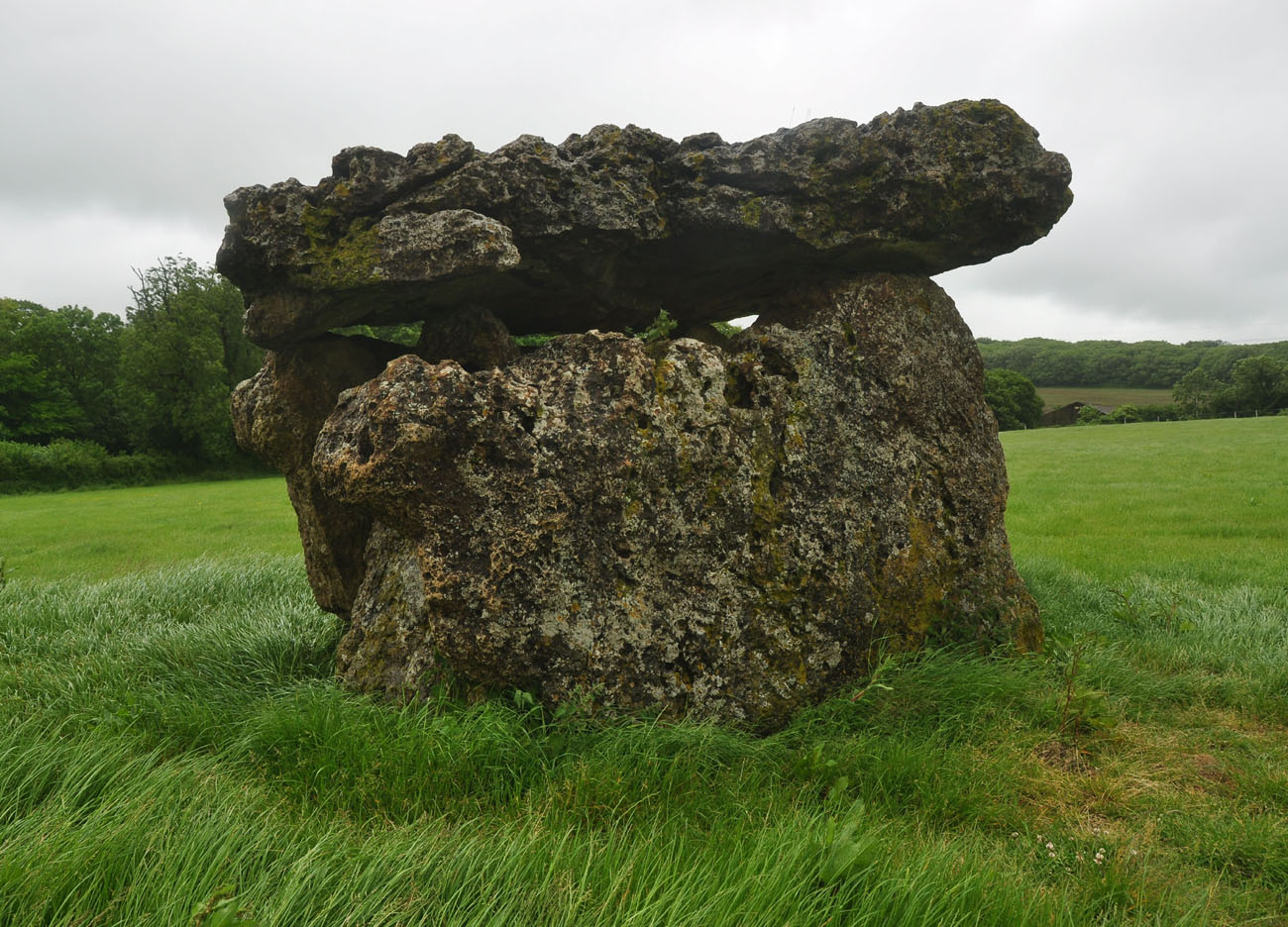History
The tomb was erected during the Neolithic period around 4000-3000 BC. It served as a place of common burial of early-agricultural communities, whose settled lifestyle has allowed them to erect similar buildings. Perhaps it also performed ceremonial functions, as a place of meetings and rites. The bodies of the dead probably remained uncovered before the bones were moved to the burial chamber. The decline in the use of megalithic tombs occurred around 2500 BC during the coming Bronze Age.
Architecture
The tomb was located near the head of the Waycock Valley, in an area gently sloping to the north-east. It consisted of a trapezoidal chamber located inside an elongated mound (cairn), made of smaller stones and earth. The mound was probably about 24-27 meters long and 11 meters wide, with the chamber occupying its eastern end. The burial chamber was orientated with its longer axis east-west, with the entrance facing east, located just at the end of the cairn.
The burial chamber had a minimum internal height of 1.8 meters. Its dimensions were approximately 2.5 x 1.5 meters. It consisted of large, horizontally placed stones forming the walls, as well as a stone slab weighing up to 35 tons that served as the ceiling. The capstone, lowering from the south-east to the north-west, was 4 meters long, 3 meters wide and 0.6 meters thick. The insides of the two rectangular side stones facing each other have been smoothed, and a triangular opening has been left at the top of the back stone, similar to those found in other dolmens such as Trethevy Quoit in Cornwall.
Current state
The tomb, now called Maesyfelin or Gwal y Filias, consists of three vertical stones and a stone slab serving as the ceiling. The mound (cairn) is almost completely dispersed, due to erosion probably caused by cattle grazing. Admission to the monument is free. It is situated in a meadow on the road connecting St Lythans with Dyffryn.
bibliography:
Castleden R., Neolithic Britain: New Stone Age sites of England, Scotland and Wales, London 1992.
The Royal Commission on Ancient and Historical Monuments in Wales, An Inventory of the Ancient Monuments in Glamorgan, Volume I: Pre-Norman, Part I, The Stone and Bronze Ages, London 1976.





